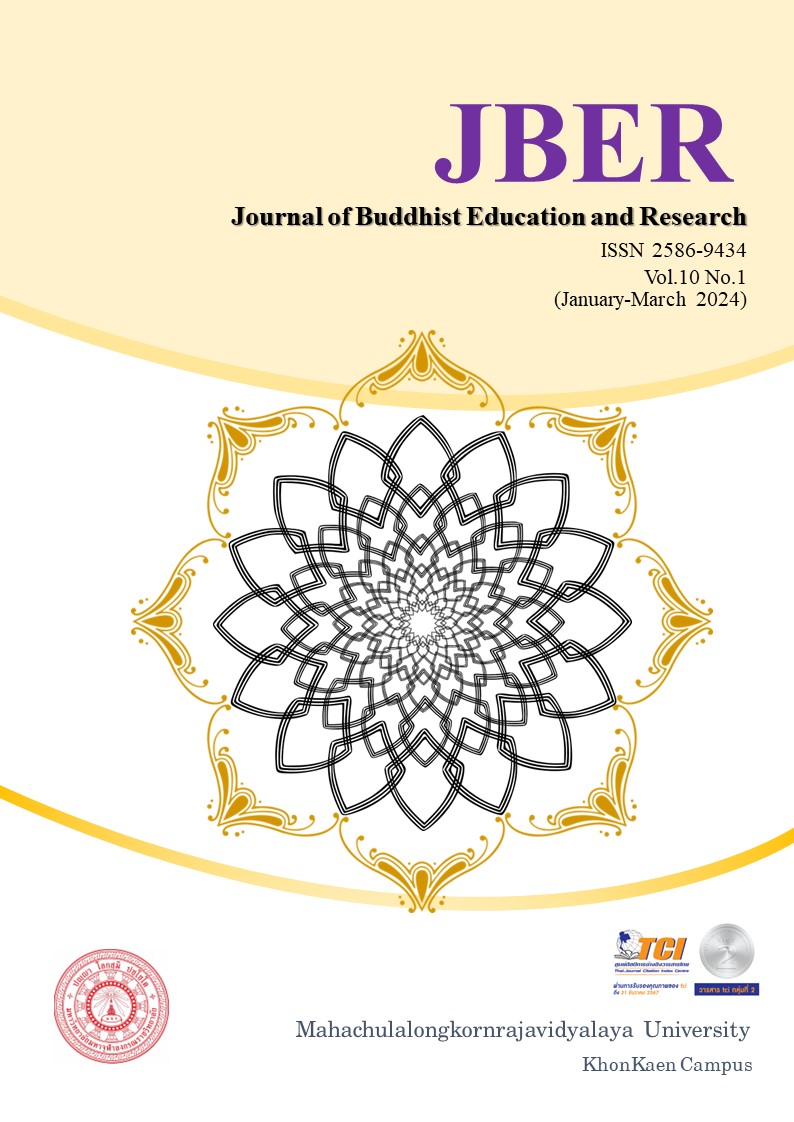FACTORS AFFECTING THE JOB SATISFACTION OF SALES PERSONNEL PERFORMING OPERATIONS IN THE REAL ESTATE BUSINESS IN THE BANGKOK AREA
Keywords:
Keywords: Work Motivation, Job Satisfaction, A Real Estate BusinessAbstract
Abstract
The objectives of this research were 1) to study work motivation and job satisfaction, 2) to compare job satisfaction, classified by personal factors, and 3) to present the relationship between work motivation and job satisfaction. This research is used by quantitative method. The instrument used in this research was a questionnaire by collecting data with 400 persons who are sales personnel performing operations in the real estate business in the Bangkok area. by non-probability sampling and purposive sampling. The statistics used in this research consisted of frequency, percentage, means, standard deviation, t-test, F-test, and Pearson’s correlation analysis.
The research finding revealed that 1) factors of work motivation and job satisfaction were both high levels, with an average value of 4.05 and 3.95, and a standard deviation of .144 and .240, 2) personal factors base on gender, age, education, status, income, and experience have no effect on job satisfaction of sales personnel performing operations in the real estate business in the Bangkok area at the statistically significant of .05, and 3) work motivation have a relation to job satisfaction of sales personnel performing operations in the real estate business in the Bangkok area at the statistically significant of .01 (R2=.687).
References
เอกสารอ้างอิง
กมลพร กัลยาณมิตร. (2559). แรงจูงใจ 2 ปัจจัย พลังสู่ความสำเร็จ. วารสารวไลยอลงกรณ์ปริทัศน์ มนุษยศาสตร์และสังคมศาสตร์, 6(3), 175-184.
เกียรติ บุญยโพ. (2562). การสร้างแรงจูงใจในพนักงานเพื่อความพึงพอใจในองค์กร. วารสารวิทยาลัยวงฆ์นครลำปาง, 8(1), 237-251.
ฐิติพร เสถียรพันธุ์ และพนิตา สุรชัยกุลวัฒนา. (2561). แรงจูงใจที่มีผลต่อความพึงพอใจในการปฏิบัติงานของพนักงานบริษัท ไทยเคียววะ ไบโอเทคโนโลยีส์ จำกัด. วารสารวิชาการหอการค้าไทย, 9(2), 1-18.
พัชสิรี ชมภูคำ และณัฐธิดา จักรภัร์ศิริสุข. (2563). ปัจจัยที่มีอิทธิพลต่อความพึงพอใจและแรงจูงใจในการทำงาน: กรณีศึกษาเปรียบเทียบคนเจเนอเรชั่น Y และเจเนอเรชั่น Z ในเขตกรุงเทพมหานคร. จุฬาลงกรณ์ธุรกิจปริทัศน์, 42(3), 1-18.
โรงพยาบาลราชวิถี. (24 มีนาคม 2564). สัญญาณ Burnout Syndrome อาการของคนเบื่องาน หมดไฟ. สืบค้นเมื่อ 9 ตุลาคม 2565, จาก https://www.rajavithi.go.th/rj/?p=1695.
วธัญพร สินพัฒนพงศ์. (2560). ปัจจัยที่ส่งผลต่อความพึงพอใจในการำทงานของพนักงานการไฟฟ้านครหลวง จังหวัดกรุงเทพมหานคร. การค้นคว้าอิสระบริหารธุรกิจมหาบัณฑิต (พาณิชยศาสตร์และการบัญชี). บัณฑิตวิทยาลัย มหาวิทยาลัยธรรมศาสตร์.
วิภาวี รัตนกุล. (2563). ปัจจัยที่ส่งผลต่อความพึงพอใจในการทำงานของพนักงานบริษัทในเขตจังหวัดปทุมธานี. วารสารมนุษยศาสตร์และสังคมศาสตร์ มหาวิทยาลัยราชพฤกษ์, 6(2), 137-151.
วิลาสินี ยนต์วิกัย. (2561). แรงจูงใจที่ส่งผลต่อความพึงพอใจในการทำงานของผู้สูงอายุในกรุงเทพมหานคร. วารสารวิจัยและพัฒนา วไลยอลงกรณ์ ในพระบรมราชูปถัมภ์, 13(2), 104-116.
เสาวรัจ รัตรคำฟู และเมธี รัชตวิจิน. (12 พฤษภาคม 2563). ผลกระทบของการทำงานที่บ้าน (Work from Home) ในช่วงโควิด 19 กรณีศึกษาของทีดีอาร์ไอ. สืบค้นเมื่อ 16 ตุลาคม 2565, จาก https://tdri.or.th/2020 /05/impact-of-working-from-home-covid-19/.
Best, J. W. (1977). Research in Education (3rd ed). New Jersey: Prentice-hall Inc.
Cochran, W. G., Mosteller, F., & Tukey, J. W. (1953). Statistical problems of the Kinsey report. Journal of the American Statistical Association, 48(264), 673-716.
Hrmprosoft. (10 September 2021). ปัญหาของคน 9 ประการ Hr ควรเตรียมมือ. สืบค้นเมื่อ 4 กรกฎษคม 2565, จาก https://webcache.googleusercontent.com.
Hrnote Asia. (24 July 2019). ความพึงพอใจของพนักงาน (Employee Satisfaction) สำคัญต่อองค์กรขนาดไหน. สืบค้นเมื่อ 1 พฤษภาคม 2565, จาก https://th.hrnote.asia/personnel-management/ 190724-employee-satifaction/.
Likert, R. (1932). A technique for the measurement of attitudes. Archives of psychology. 22(140), 1-55.





